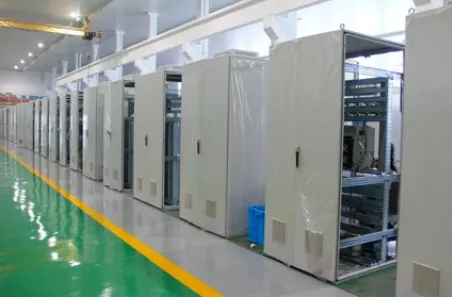
Integration of AGC Systems in Modern Cold Rolling Mills
In the highly competitive steel manufacturing industry, precision and efficiency are paramount. The automatic gauge control system (AGC) has emerged as a critical technology in modern cold rolling mills, ensuring consistent strip thickness, improved product quality, and enhanced operational efficiency. By integrating advanced AGC controllers with hydraulic automatic gauge control mechanisms, manufacturers can achieve tighter tolerances, reduce material waste, and optimize rolling speeds. This article explores the role of automatic gauge control in strip rolling, the evolution of AGC systems, and their impact on the performance of automatic gauge control cold rolling mills.

The Fundamental Role of AGC in Cold Rolling Mills
The automatic gauge control system is designed to maintain uniform thickness across the entire length and width of rolled strips. Variations in thickness can lead to product defects, increased scrap rates, and reduced mechanical properties in the final product. In a cold rolling mill, the AGC system continuously monitors and adjusts rolling forces to compensate for material inconsistencies, thermal expansion, and mill stretch.
Modern AGC controllers utilize real-time feedback from sensors such as X-ray gauges, laser micrometers, and load cells to make instantaneous corrections. This ensures that the automatic gauge control cold rolling mill produces high-precision strips for demanding applications, including automotive, aerospace, and electronics industries.
Hydraulic Automatic Gauge Control: Precision Through Advanced Actuation
One of the most significant advancements in automatic gauge control in strip rolling is the adoption of hydraulic automatic gauge control (HAGC) systems. Unlike traditional screw-down mechanisms, hydraulic AGC provides faster response times and higher force accuracy, enabling tighter thickness control.
Key advantages of hydraulic automatic gauge control include:
High dynamic response: Hydraulic actuators can adjust roll gaps in milliseconds, compensating for rapid variations in material hardness or incoming strip profile.
Improved strip flatness: By maintaining consistent rolling pressure, HAGC minimizes edge drop and center buckles, ensuring superior flatness.
Adaptability to high-speed rolling: Modern automatic gauge control cold rolling mills operating at high speeds rely on hydraulic systems to maintain precision without sacrificing productivity.
The integration of hydraulic AGC has revolutionized strip rolling, allowing manufacturers to produce ultra-thin, high-strength steel with minimal deviation.
Automatic Pressure Control and Its Synergy with AGC
A critical component of an effective AGC system is automatic pressure control, which regulates the hydraulic forces applied to the work rolls. By maintaining optimal pressure levels, the system prevents over-rolling or under-rolling, both of which can lead to gauge variations.
In an automatic gauge control cold rolling mill, pressure control works in tandem with the AGC controller to:
Compensate for roll wear: As rolls degrade over time, the system adjusts pressure to maintain consistent strip thickness.
Handle varying material properties: Different steel grades require different rolling forces, and automatic pressure control ensures seamless transitions.
Enhance mill stability: By preventing sudden force fluctuations, the system reduces vibrations and improves strip surface quality.
This synergy between automatic gauge control and automatic pressure control is essential for achieving high yields and minimizing downtime.
Evolution of AGC Controllers: From Analog to AI-Driven Systems
The AGC controller has undergone significant advancements, evolving from basic analog systems to sophisticated digital and AI-based solutions. Modern controllers leverage:
Model-based predictive control (MPC): Uses mathematical models to anticipate and correct gauge deviations before they occur.
Adaptive learning algorithms: Continuously optimize rolling parameters based on historical data and real-time feedback.
Integration with Industry 4.0: Cloud-based analytics and IoT-enabled sensors allow for remote monitoring and predictive maintenance.
These innovations have made automatic gauge control in strip rolling more reliable, reducing human intervention and improving repeatability.
Challenges and Future Trends in AGC Systems
Despite their advantages, AGC systems face challenges such as:
Sensor accuracy and calibration: Even minor measurement errors can lead to gauge deviations.
Handling of advanced high-strength steels (AHSS): These materials require precise force control to avoid cracking or shape defects.
Future developments in automatic gauge control cold rolling mills may include:
Enhanced AI-driven AGC: Machine learning could further optimize rolling parameters in real time.
Hybrid electro-hydraulic systems: Combining electric and hydraulic actuation for greater efficiency.
Advanced material modeling: Simulating rolling behavior to preemptively adjust AGC settings.
The integration of AGC systems in modern cold rolling mills has transformed strip production, enabling manufacturers to meet stringent quality standards while maximizing efficiency. From hydraulic automatic gauge control to AI-enhanced AGC controllers, these systems ensure precise thickness control, superior strip flatness, and reduced material waste. As the demand for high-strength, lightweight steel grows, continued innovation in automatic gauge control in strip rolling will be essential to maintaining competitiveness in the steel industry. The future of automatic gauge control cold rolling mills lies in smarter, faster, and more adaptive systems that push the boundaries of precision manufacturing.
-
Indian Clients Visit YWLX to Inspect Skin-pass MillNewsJun.22,2025
-
Typical Products from Reversing Cold Rolling ProcessNewsMay.26,2025
-
Surface Finish Improvement through Skin Pass RollingNewsMay.26,2025
-
Cold Rolling in the Context of High-Strength Steel DemandNewsMay.26,2025
-
AGC in Hot Rolling Mills: Challenges and SolutionsNewsMay.26,2025
-
Why Reversing Cold Rolling Mills Are Ideal for Specialty MetalsNewsMay.13,2025
-
The Pivotal Position of Hot Rolling Mills in the Iron and Steel Industry ChainNewsMay.13,2025










